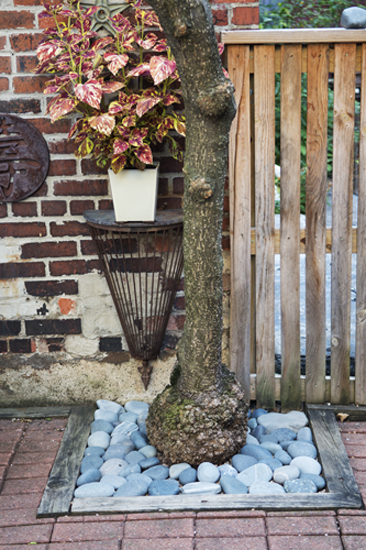bluestones
August 7, 2015
salisbury and north taylor
 On Monday, Connie and I went up to the cottage, because I wanted to collect some rocks to bring home. Once I noticed the blue-stones, I decided that I wanted only them. At the water’s edge, being washed over by the waves, I found this beautiful, huge, flat stone (bet it must weigh hundreds of pounds) and if I had five or six people helping me, I would have dug it up and load it into my car. (I can picture it in my back-yard, a blue amoeba floating among the white marble-chips.) After a good hour and Connie going into the water to dig out some bigger rocks, we loaded all the blue-stones we had collected into boxes in the back of her SUV. When I got to my parents’ I asked my Dad if he had some old balsa-wood bushel-baskets I could take. He directed me to his greenhouse where I found hundreds of bushel-baskets. (My Dad is a pack-rat; you should see his tool-room in the back of the garage. Over the last couple of years, I’ve taken to borrowing things from this treasure stove. This visit, I borrowed two old extensions and a cutting-board.) I filled two bushels with the blue-rocks from Connie’s car.
On Monday, Connie and I went up to the cottage, because I wanted to collect some rocks to bring home. Once I noticed the blue-stones, I decided that I wanted only them. At the water’s edge, being washed over by the waves, I found this beautiful, huge, flat stone (bet it must weigh hundreds of pounds) and if I had five or six people helping me, I would have dug it up and load it into my car. (I can picture it in my back-yard, a blue amoeba floating among the white marble-chips.) After a good hour and Connie going into the water to dig out some bigger rocks, we loaded all the blue-stones we had collected into boxes in the back of her SUV. When I got to my parents’ I asked my Dad if he had some old balsa-wood bushel-baskets I could take. He directed me to his greenhouse where I found hundreds of bushel-baskets. (My Dad is a pack-rat; you should see his tool-room in the back of the garage. Over the last couple of years, I’ve taken to borrowing things from this treasure stove. This visit, I borrowed two old extensions and a cutting-board.) I filled two bushels with the blue-rocks from Connie’s car.
What is U.S. Customs going to say when they see two bushel-baskets full of rocks in the back of my car?
I needed to find out what kind of rocks we had collected and the search brought up basalt – images of basalt rocks. I then started to think about the Bluestones at Stonehenge. The giant stones outside of Salisbury are also a type of volcanic basalt. It’s amazing to think that the blue-stones on the shores of Lake Superior and the monoliths in southern England share a geological profile.